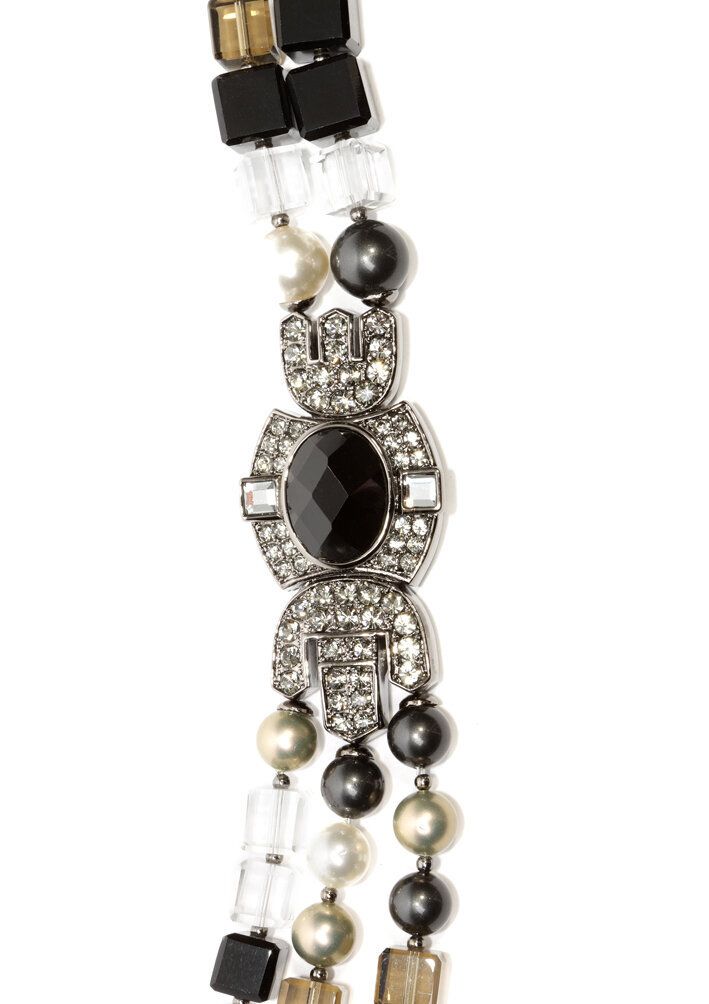
Last Season fashion referenced the 1940s, this season designers have revisited an earlier vintage. The Jazz Age proved a strong influence on Milan and New York Fashion Weeks last September, and is set to be one of the key trends for Spring/Summer 2012.
Both Etro and Gucci featured drop-waisted flapper dresses, geometric patterns, shiny slinky fabrics, boxy jackets, pleats and fringed hems. The colour palette at Gucci consisted of monochrome black and whites, gold and green in hard zigzag patterns; Gucci designer, Frida Giannini, cited Man Ray's images of Louise Brooks and the shipping heiress Nancy Cunard as inspiration. Meanwhile in New York Ralph Lauren revisited his Great Gatsby roots, he worked on the 1974 movie, in soft chiffons and cloche hats.
The trend for Art Deco style will be further reinforced by the excitement surrounding two films this year; Baz Luhrmann's Great Gatsby, starring Leonardo DiCaprio and Carey Mulligan, due for release in December 2012 and Oscar hopeful The Artist.
The Artist is a visual treat; the imagery has to work particularly hard as the film is silent and in black and white. The Jazz Age setting is conveyed through the Art Deco sets and the clothing. Costume designer, Mark Bridges, researched early Joan Crawford films to help plot the transformation of Peppy Miller, played by actress Bérénice Bejo, from chorus girl, to Jazz Age Baby and finally glamorous star. Some original garments were used in the film, such as the nightgown worn by Bejo and a tennis dress; vintage milliners were required to fresh and re-block hats that had spent decades in boxes. The rest of the costumes are copies, some trimmed with original vintage Art Deco brocade.
It is interesting that we have two films set during the same period coming out during a time of economic recession. Cultural responses to economic decline tend to be split: either depicting realism or escapism. Typical escapist movie genres are the Telefoni Bianchi films of 1930's fascist Italy, with fashionable society women in their boudoirs talking on white telephones.
A similar response is to yearn for the golden age of the past when we assume life was less complicated. The roaring 20s saw a period of economic boom, optimism, huge consumer demand and an enormous cultural revolution embracing modernity. Women gained the right to vote in America and rejected the corset and the constraints of the past in favour of knee length 'flapper' dresses. With its story set during 1927 - 1931, the Artist spans the 20s' Golden Age and the hardships of the Great Depression; it tells the story of two people one a famous actor the other an unknown who are irresistibly drawn to one another, but are kept apart by chance and circumstance.
What this obsession with the glories of the past says about our current circumstances is anyone's guess; but all I can say is that consumers in BRIC countries still long for luxury with Mulberry tripling its profits in 2011 and Prada seeing a 74% rise in its net income last year.
So what now for fashion's designers? If this time travelling trend continues in a backwards direction we'll be seeing the Edwardian era next, does that mean corsets again?
Art Deco necklace image detail, find at www.glam-net.com
